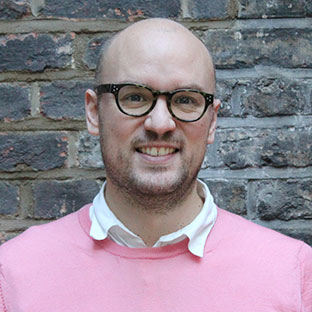Perennial education high-performer South Korea is increasingly investing in creative and cultural learning. This is in marked contrast to low-performing England, where high-stakes accountability has dominated government policy, and the arts are increasingly marginalised. Might the Korean experience have any lessons for getting cultural learning more firmly on the agenda in England?
Back in May, the RSA began a project with the British Council as part of the year-long UK/Korea festival of culture Creative Futures. We’re investigating arts and cultural learning in schools in South Korea and the UK, inviting policy-makers and practitioners in both countries to exchange ideas and insights into how provision might be improved.
The first part of the exchange, a visit by an RSA-led delegation to Seoul, exposed a tendency in both countries to regard arts-friendly education policy as the bellwether of a thriving cultural learning sector. Korea’s education and culture ministries have had just such an entente cordiale in place since 2004, setting up a national agency and national programmes available to most schools.
Like a number of East Asian jurisdictions, South Korea appears to be recognising the limits of a ‘performativity’ focus in education. Government rhetoric suggests a new interest in developing creative capacities alongside academic achievement and it’s been difficult for policy-makers to ignore the negative consequences of high-stakes, high-pressure schooling for students (poor mental health, underemployment), parents (spiralling costs of private tutoring) and the whole economy, as employer demand for ‘creative’ workers rises.
At first glance, South Korea’s ten-year expansion of state-funded arts and cultural education appears to be part of these efforts to shift towards a more creative education. The Support for Arts and Culture Education Act (2005) guaranteed citizens “equal opportunities for systematic study of and education on arts and culture” and committed the state to create five-year strategies and annual delivery plans to ‘vitalize’ arts and cultural education. The Korea Arts and Cultural Education Service (KACES) was set up by the same act of parliament to deliver against the plans: developing networks between schools and other educational facilities/ organisations; training teachers and cultural education instructors as well as leading research and international collaboration. Ten years on, KACES employs over 5000 arts educators, each working up to 15hrs/week in 10,000 schools nationwide.
However, in spite of the rhetoric, the value of the arts in developing creativity tends to gets lost from programme evaluations, which focus on things that are more easily measured – hours of instruction delivered, jobs created – rather than on how arts and culture are embedded in schools or used effectively to support creativity or wider learning. Although the Korean model has enabled widespread provision, arts educators and school leaders we met expressed reservations about the centralised model. A standardised offer has left some school leaders frustrated that the model can’t respond to local needs and opportunities, and teaching artists feel that it doesn’t make the most of their motivations and skills. The programme’s desire to create work for practising artists rather than specialist creative learning practitioners has made quality-assurance difficult. It has also led to industrial action, as artists with growing expertise and enthusiasm for education demand the opportunity to work more than the 15hrs/week maximum currently permitted.
As our discussions in Seoul progressed, the Korean example served as a reminder that unless government policy innovations facilitate independent thinking and responsiveness to situational need, they are unlikely to create satisfactory provision. English schools and cultural sector practitioners worried about government indifference should recognise that their (by necessity) more entrepreneurial approach is just as critical to ensuring effective provision. As the RSA’s developing work in understanding how social change happens indicates: there are no magic policy bullets – effective strategies need system-wide attention.
In the absence of a perfect model to study, the conversations turned to a key, commonly held, concern: how to ensure high quality provision? Three themes relating to that enquiry began to emerge (themes that we’ll continue to explore in more depth as the project continues and which will be at the heart of a joint publication in January 2018):
- The value of trusting relationships in the quest for ongoing improvements to practice. In particular we focused on trust between government agencies and practitioners including artists, schools and the local brokers of their relationships. Building and sustaining trust requires an acceptance that agency should be delegated from the centre to delivery agents. But in Korea, facilitating autonomy and individual agency requires a considerable culture shift in a country where centralised state leadership has been the norm in all sectors of the economy. And in the UK, without a compact between education and culture ministries, what is that trust predicated on and how can it be strengthened?
- Authentic artistic practice, applied (not just transposed) to the school context can support the development of conditions that nurture learning, but students’ experience of it should be real, rather than realistic. Authenticity must not be limited to ensuring that cultural learning practitioners are ‘real’ artists; it should involve an application of authentic artistic practices to teaching and learning. Artistic processes need to be re-examined for use in the context of the school and we must avoid seeking only to reproduce them for the erudition of learners.
- Where there is partnership, clarity of purpose and alignment of objectives are more important than the development of common objectives. Partners must acknowledge and (seek to) measure what they value. Is it the child’s learning? Is it audience development, securing a market for arts and culture and providing jobs for artists? In how we assess outcomes, are we listening to the small voices, as well as the powerful ones: where are minority interests, pupil and parent voice? Whatever it is, it shouldn’t be generalised statements of transformational impact. Practitioners need to proceed with what delegate Joan Parr, Head of Creative Learning - Creative Scotland called ‘a new modesty’: a commitment to greater honesty about shortcomings and more effective use of evidence to inform improvements.
This latter point speaks directly to our work with Arts Council England and the Education Endowment Foundation to investigate the benefits of cultural learning in schools and to support more effective use of evidence in the sector. If you’re an arts/ cultural learning professional, please fill in our survey about use of evidence.
Related articles
-
Blog: The new digital learning age in three tribes, seven charts and three recommendations
Anthony Painter
Anthony Painter explains the key research and findings of our first Power to Create paper - The new digital learning age: how we can enable social mobility through technology.


Join the discussion
Comments
Please login to post a comment or reply
Don't have an account? Click here to register.